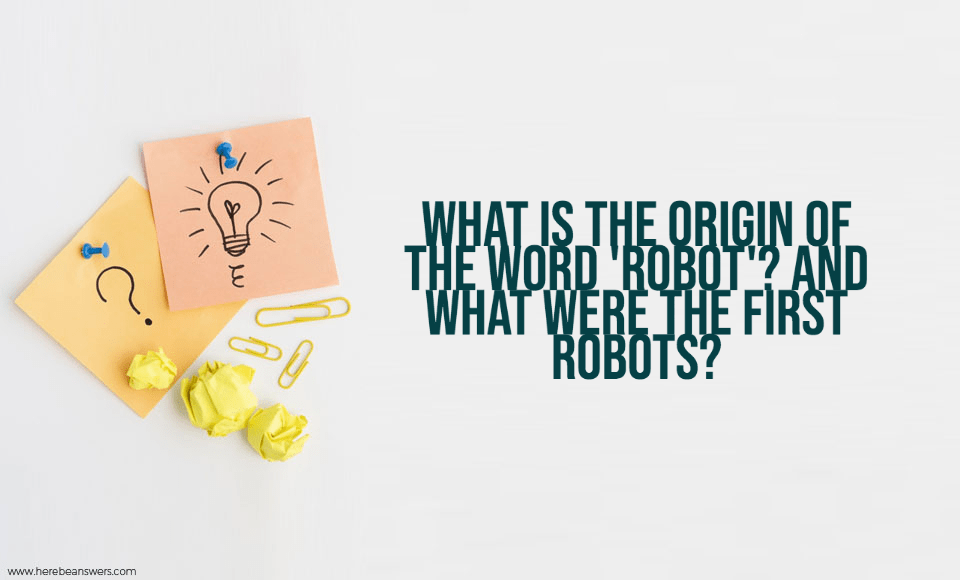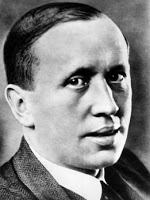The word ‘robot’ was coined by Karel Čapek, a Czech Playwright, in the play called “RUR,” which stood for Rossum’s Universal Robots. In the said play, the human characters have mechanical servants that look like people and do manual labor for them. Capek called these machines “robots” as the Czech word “robota” means labor.
Karel Čapek
RUR
The play “RUR” was written in 1920, and it premiered on January 25, 1921. Despite being called robots, the mechanical servants in the play are living beings that have flesh and blood, although they are artificial. In the beginning, these robots were happy to work for their masters, but their demeanor on the matter changed when a robot rebellion was initiated, and the event led to the extinction of humans. Because of the play’s unique story, it became immensely popular in Czechoslovakia. Today, the play has been translated in more than 20 languages, and the term “robot” has been widely used humans after the play’s publication.
Karel Čapek would later write other famous plays, such as “Pictures from the Insects’ Life,” “The Makropulos Affair,” and the controversial “The White Disease.” The playwright would also go on to write novels, which are becoming a more popular form of entertainment than plays during the 1930s. His most popular novel is “War with the Newts,” published in 1936 and was considered as the first dystopian novel.
Automata
If we define the robot as a machine that works like a human being, then the first robots were the automata, which are remarkable moving dolls that could copy human movements or actions, and sometimes they could perform these tasks with amazing accuracy. For example, the mechanical doll could write a whole sentence on a piece of paper using a pen and ink.
Automata dolls were made in the 1700s, and they worked by clockwork and contained complex systems of gears. The first dolls were built by the Jaquet-Droz family, particularly Pierre Jaquet-Droz and his son Henri-Louis Jaquet-Droz. A musician named Jean-Frédéric Leschot was also a part of the team that built the Jaquet-Droz automata dolls. The automata were first built for the purpose of advertising the watches that the family made in the 18th century, as the dolls show how crafty the Jaquet-Droz family is when it comes to producing high-quality products.
There are three dolls that the Jaquet-Droz family made, and these dolls are named the musician, the draughtsman, and the writer.
The musician looks like a female organ player that wears a blue dress, and the organs that she plays is actually a real organ that can play music, although it is in a much smaller size compared to the standard organ. Interestingly, the musician’s chest shows her breathing even if she doesn’t need oxygen at all, and she also performs movements that are typically seen in human organ players, such as moving the finger to play keys as well as balancing the torso for proper playing.
The draughtsman is the doll that can draw images, and there are four drawings in total that the robot can produce. The first image is a portrait of Louis XV, and the second image is a couple that is wearing fancy clothes. It is believed that the second drawing depicts Louis XVI and Marie Antoinette. The last two images are a dog and a chariot that Cupid is riding on. A fantastic feature about the draughtsman is that it sometimes blows air on the pencil to remove dust that can make the images blurry.
The writer is the one capable of writing full sentences on a piece of paper. It is built to have the same mechanics and system as the draughtsman, but the writer is set to write any words, phrases, or sentences that are 40 letters long. This automata doll would often put ink in that goose feather that he is holding so that it can continue to write more letters.
These dolls were once lost, as the Jaquet-Droz family and the people who owned them in later years would often carry and move these machines in various locations around the world. They were eventually found in 1906 after the History and Archeology Society of Neuchâtel bought them for 75,000 gold francs. The society then donated the automata dolls at the Musée d’Art et d’Histoire in Switzerland.
These mechanical devices were primarily made for entertaining people and could not do physical tasks like modern robots. However, the dolls served as an inspiration for the machines that are becoming more and more automatic. On the other hand, it is only with the development of computers in the last 40 years do robots have been able to perform more complex tasks. Today, you would often see robots working in factories to build cars or other complicated objects, although they are still mostly controlled by humans.
Additional reading:
Robot (Wikipedia)
Karel Čapek (Wikipedia)
Related posts:

